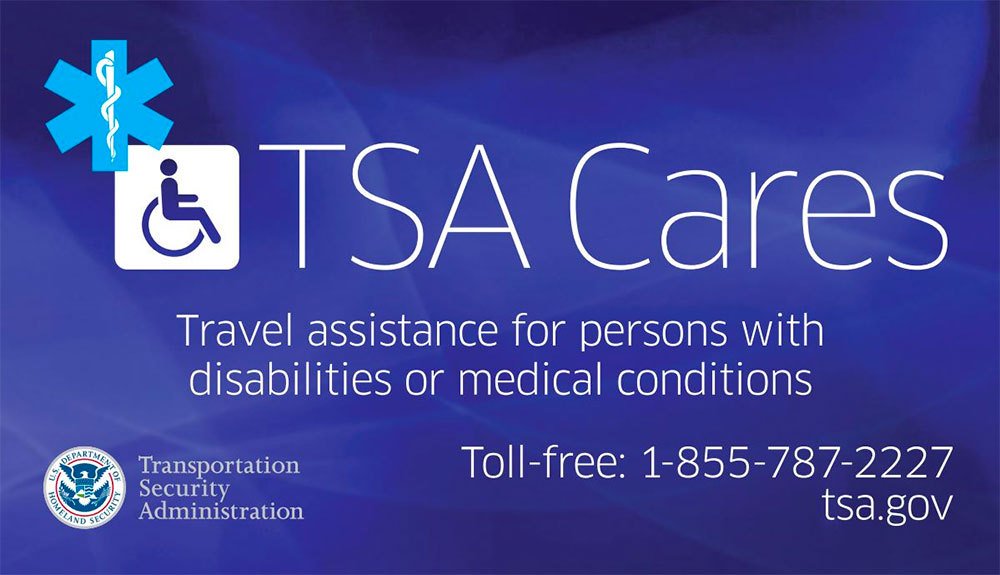Traveling can be stressful for any family. If you’re traveling with a loved one who uses a wheelchair, it can be overwhelming. Recently, I presented to about 160 Hilton Grand Vacations team members on “What I Wish Hospitality Workers Knew about Traveling with a Disability.” It always feels good to educate any community about disabilities. The purpose of the presentation was to give team members a “feel” for what it was like when I was traveling with my daughter, Reagan. Reagan passed away in December 2023, but we traveled a lot, and I wanted to share my insights.

With the holidays approaching and more people thinking about traveling, I hope my experiences can help families realize that, with planning, a vacation with a child with a disability can be a lot of fun! Look for more articles to come on packing, working with the airlines, and navigating resorts.
Overwhelmingly, our experience with TSA was great. The agents have an important job to do and did it respectfully. I realize that is not everyone’s experience. The first time through TSA with Reagan in her wheelchair was very nerve-wracking, but it didn’t take long to realize what they needed to do and how we could facilitate the process.
The Screening Process
We always entered the screening area in a separate line. Sometimes it was the first-class line and sometimes it was TSA Pre-Check. When we bought our tickets, we always noted that Reagan was in a wheelchair and needed assistance. We didn’t need anyone to push her wheelchair, but we needed help when we were boarding the plane, so it is best to let them know asap and follow up a few days before the flight. This automatically gave Reagan TSA Pre-Check status and allowed all of us to go through a faster lane. Sometimes, if an agent was near the entrance, they would just walk us through the first-class line. TSA officially states that you must register for TSA Pre-Check to get access, but that was not our experience. It is worth it to pay to have TSA Pre-Check. Many credit cards will reimburse you the cost as part of their member benefits.
Here is where our family would split up. Donald would take Chloe and go through the security screening with all our carry-on bags. I would go through the metal detector and then take Reagan to the side with an agent, sometimes two agents. Our first time through TSA, they tried to separate Reagan and I, but I told them she could not communicate and had seizures, so they probably didn’t want to take on that responsibility. There was no way I would have allowed them to take her anywhere I couldn’t have eyes on her.
Checking the Wheelchair
They always screened Reagan in her wheelchair. She could not move herself to another chair or stand on her own. If a traveler can stand, then they can walk through the detectors. They started by testing her wheelchair for explosives. They would put what looked like a piece of small gauze on different parts of her chair and then bring it to a machine that checked for explosives. This always made me smile because, to us, this seemed ridiculous. But we respected that they had a job to do. Throughout this procedure, I could not touch Reagan and had to remain several feet away.
Then, they needed to do a “pat down.” Reagan wore a harness in her wheelchair for trunk control and had a fitted wheelchair for stability. This meant I needed to unbuckle her and help her lean forward so an agent could pat down her back, side of her legs, and sometimes her head. The agent did the pat down quickly and professionally. Most times, the agent would tell her how beautiful she was or talk about how excited she must be about her trip. I will forever love TSA agents for this. Too many people wouldn’t treat Reagan as a person, mostly because she could not respond. TSA always did.
Programs that Can Assist
Then, we could be on our way. It did not take long once a female agent arrived. Sometimes we needed to wait a few minutes for a female agent, but that happens to anyone going through security. Obviously, this process is different depending on the disability. The TSA website has a lot of information. If your disability is not clearly visible, as Reagan’s was, contact TSA Cares for assistance and a notification card to use at security. You can also check out my article “How to Make Flying Easier with a Disability.” This article provides links to many different programs to assist travelers.
TSA Cares– You can call the TSA Cares helpline at (855) 787-2227 to request assistance with the screening process. You can call up to 72 hours before your flight. TSA Cares can provide passenger support specialists and expedited lanes.


